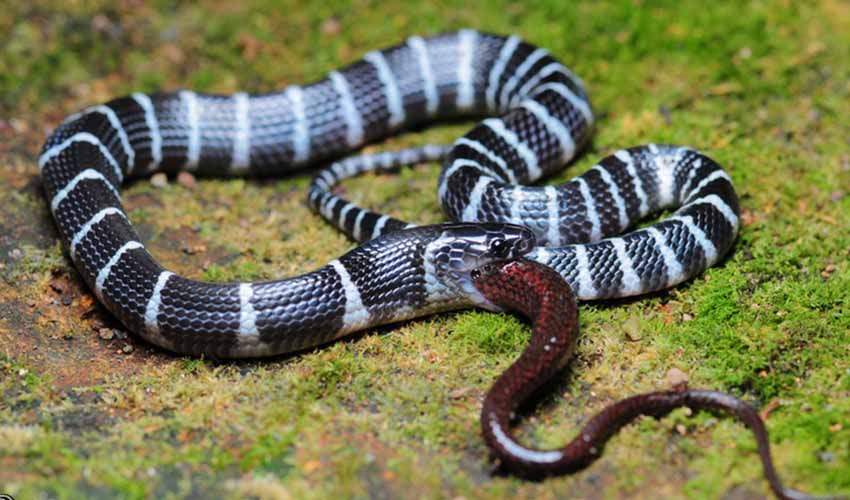One of Asia’s most elegant yet fearsome snakes—a creature of contrasts, known for its mesmerizing beauty and one of the most potent venoms on Earth. Native to Southeast and East Asia, where it inhabits forests, grasslands, and even farmlands near rivers and ponds. With its glossy black and white bands and calm temperament, the many-banded krait is a living paradox: peaceful in demeanor but incredibly dangerous if provoked.
Its body is smooth, cylindrical, and marked with alternating black and white bands of nearly equal width, creating a striking contrast that gleams under moonlight. Its head is barely wider than its neck, giving it a sleek, streamlined appearance. The bands serve as aposematic coloration, a natural warning signal to predators that it’s venomous. Its scales shine like polished obsidian, making it one of the most visually striking snakes in Asia.
The many-banded krait is nocturnal and secretive, spending the day hidden in burrows, termite mounds, or under logs. At night, it becomes active and primarily hunts other snakes, including smaller kraits, vipers, and cobras. It also consumes lizards and frogs when available. Like its relatives, it relies on its neurotoxic venom, which attacks the nervous system and can cause paralysis. Though it’s considered one of the most venomous land snakes in the world, it’s shy and non-aggressive, rarely biting humans unless handled or stepped on. During the day, it’s sluggish and slow-moving, sometimes allowing people to pick it up without immediate reaction—a deceptive calm for a snake of its lethal potential.
Its venom is incredibly powerful, containing potent neurotoxins that block nerve transmission, leading to respiratory failure if untreated.
Historically, the many-banded krait has been one of the primary species studied for antivenom development across Asia. Despite its deadly nature, it plays a vital ecological role by controlling populations of other snakes and small vertebrates, maintaining balance within its ecosystem.
Distribution
 China
China Hong Kong
Hong Kong Macao
Macao Taiwan
TaiwanAnything we've missed?
Help us improve this page by suggesting edits. Glory never dies!
Suggest an editGet to know me
Terrestrial / Aquatic
Altricial / Precocial
Polygamous / Monogamous
Dimorphic (size) / Monomorphic
Active: Diurnal / Nocturnal
Social behavior: Solitary / Pack / Herd
Diet: Carnivore / Herbivore / Omnivore / Piscivorous / Insectivore
Migratory: Yes / No
Domesticated: Yes / No
Dangerous: Yes / No




